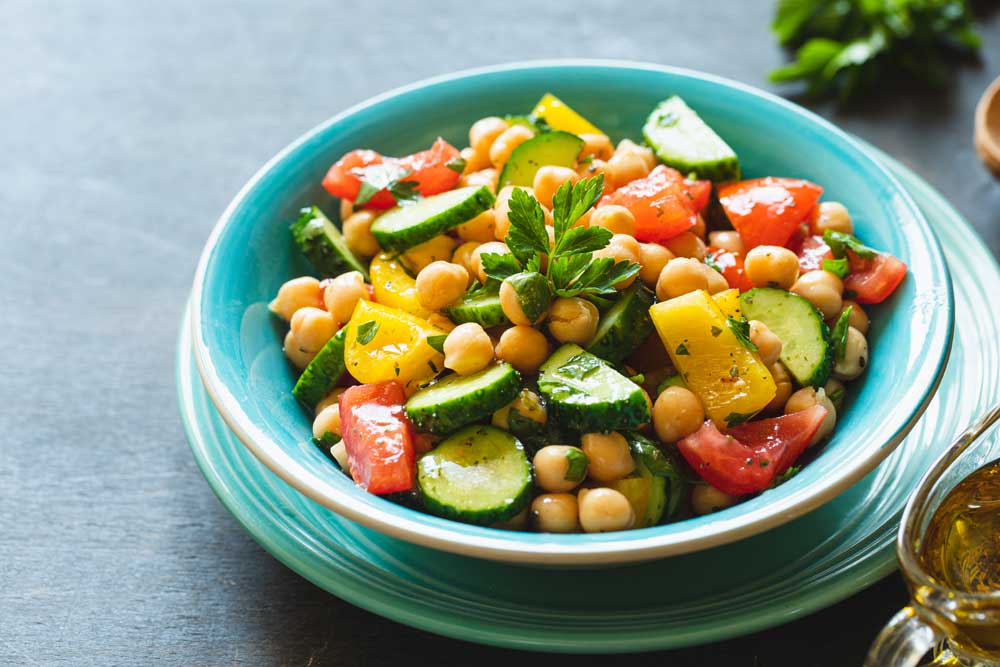The sattvic diet is deeply rooted in the philosophical and spiritual traditions of ancient India, particularly within Ayurveda and yoga. The term “sattva” translates to purity, clarity, and harmony, and the diet reflects these principles by focusing on foods that are believed to nurture not just physical health, but also mental and spiritual well-being. It emphasizes a diet composed of fresh, whole, and natural foods that are gentle on the digestive system, promoting overall balance and clarity. This approach is intended to harmonize the body, mind, and spirit, guiding individuals toward a state of inner peace and heightened awareness.
Distinct from many contemporary diets that prioritize physical health alone, the sattvic diet integrates a broader view of wellness. It avoids foods that are heavily processed, excessively stimulating, or those that are thought to disturb mental tranquility, such as those high in caffeine or refined sugars. By excluding tamasic (dull and lethargic) and rajasic (exciting and restless) foods, the diet seeks to cultivate a serene and balanced state of mind. In essence, the sattvic diet provides a framework for eating that supports not only physical health but also fosters mental clarity and spiritual growth, aligning with the ancient belief that true well-being encompasses more than just the physical body.
Who is the Sattvic Diet For?
The sattvic diet is suitable for individuals seeking a more balanced and mindful way of living. It appeals particularly to those interested in enhancing their spiritual practices, such as yoga and meditation, by fostering mental clarity and emotional stability. People who are looking to improve their overall health while maintaining a peaceful and harmonious state of mind will also find this diet beneficial. Additionally, it is ideal for anyone aiming to avoid foods that are heavy, overly spicy, or processed, which can contribute to physical and mental discomfort.

Benefits of the Sattvic Diet
1. Mental Clarity and Focus: The sattvic diet’s emphasis on fresh, unprocessed foods can enhance cognitive function, making it easier to focus and think clearly. Foods rich in nutrients and antioxidants support brain health, contributing to improved concentration and mental performance.
2. Emotional Stability: By consuming foods that are gentle on the digestive system and free from stimulants or artificial additives, individuals may experience reduced anxiety and a more balanced mood. This diet encourages a sense of tranquility and emotional equilibrium.
3. Physical Well-being: The sattvic diet promotes digestion and overall health by favoring foods that are light and easy to digest. It supports a healthy immune system and can contribute to a more efficient metabolism, leading to better energy levels and physical vitality.
4. Spiritual Growth: In many spiritual traditions, the sattvic diet is believed to help purify the mind and body, facilitating deeper meditation and a more profound connection to one’s inner self and spiritual practice.
Potential Drawbacks of the Sattvic Diet
1. Nutrient Imbalance: Since the sattvic diet excludes many animal products and processed foods, it can sometimes be challenging to get adequate levels of certain nutrients like protein, iron, and vitamin B12. Careful planning is required to ensure that all nutritional needs are met.
2. Limited Food Choices: The diet's restriction on certain foods, such as onions, garlic, and spicy foods, may feel restrictive to some individuals. This can make meal planning and eating out more challenging.
3. Initial Adjustment: Transitioning to a sattvic diet can be difficult for those used to a more varied diet. The shift may require time to adapt to new foods and cooking methods, which can be an obstacle for some.
Foods to Eat in a Sattvic Diet
1. Fruits and Vegetables: Fresh, organic fruits and vegetables are staples. They should be seasonal and locally sourced whenever possible to maximize their nutritional value and purity.
2. Whole Grains: Foods like brown rice, quinoa, barley, and oats provide essential nutrients and energy. They are considered sattvic because they are nourishing and easy to digest.
3. Legumes: Lentils, chickpeas, and mung beans are excellent sources of plant-based protein. They are included in the sattvic diet for their high nutritional content and digestibility.
4. Nuts and Seeds: Almonds, walnuts, and sunflower seeds offer healthy fats and proteins. They are a good addition to the diet but should be consumed in moderation.
5. Dairy Products: Pure, unprocessed dairy products like milk, ghee (clarified butter), and yogurt are considered sattvic if they are sourced from well-treated animals and prepared in a clean environment.
6. Herbs and Spices: Mild herbs and spices such as turmeric, cumin, and coriander can enhance flavor without overpowering the digestive system. Avoid overly spicy or pungent spices.
Foods to Avoid
1. Meat and Fish: These are considered tamasic and are excluded from the sattvic diet due to their perceived heavy and stimulating effects on the mind and body.
2. Processed Foods: Packaged snacks, sugary treats, and refined foods are avoided as they often contain artificial additives and preservatives.
3. Onions and Garlic: Though they are nutritious, onions and garlic are excluded because they are believed to stimulate passion and agitation, which is contrary to the sattvic ideal of calm and clarity.
4. Caffeinated Beverages: Coffee, tea, and other caffeinated drinks are avoided because they are considered stimulating and can disrupt mental calmness.
5. Alcohol and Stimulants: These substances are excluded as they can disturb the balance of mind and body, impeding spiritual and emotional growth.
Sample Menu
Breakfast:
● Sattvic Smoothie Bowl: Blend banana, spinach, almond milk, and a spoonful of flaxseeds. Top with fresh berries and a sprinkle of chia seeds.
Lunch:
● Quinoa Salad: Combine cooked quinoa with chopped cucumbers, tomatoes, bell peppers, and a lemon-tahini dressing. Serve with a side of steamed vegetables.
Snack:
● Fresh Fruit: Enjoy a bowl of seasonal fruit like apples, pears, or berries.
Dinner:
● Lentil Soup: A soothing soup made with yellow lentils, carrots, celery, and a touch of cumin. Pair it with a side of brown rice.
Dessert:
● Ghee-Roasted Apples: Bake apple slices in ghee with a sprinkle of cinnamon until tender.
Alternatives to the Sattvic Diet
If the sattvic diet feels too restrictive or challenging, consider incorporating some of its principles into a more flexible eating plan. For instance, a predominantly plant-based diet that includes a wider variety of vegetables and grains while reducing processed foods can still offer many of the health benefits associated with sattvic eating.
A balanced approach might include:
● Mediterranean Diet: Rich in fruits, vegetables, whole grains, and healthy fats, with moderate consumption of dairy and lean proteins.
● Whole Foods Plant-Based Diet: Focuses on whole, unprocessed plant foods while allowing for a wider range of foods compared to the sattvic diet.
Both of these alternatives can be adapted to include many sattvic principles while offering greater dietary flexibility.

Conclusion
The sattvic diet presents a holistic approach to nutrition that harmonizes the physical, mental, and spiritual aspects of well-being. By prioritizing fresh, natural, and minimally processed foods, this diet fosters a state of balance and purity that is believed to enhance mental clarity, emotional stability, and spiritual growth. The focus on easily digestible and nourishing foods supports overall health and vitality while promoting a sense of inner peace. This approach aligns with ancient traditions that view diet as a key element in achieving a harmonious and purposeful life, offering a pathway to both physical wellness and deeper self-awareness.
However, the sattvic diet may pose certain challenges, particularly regarding nutrient diversity and dietary restrictions. Its exclusion of specific foods, such as meat, fish, and stimulants, can limit the range of available nutrients and may require careful planning to ensure a well-rounded diet. For those who find the strict guidelines too restrictive, incorporating sattvic principles into a more flexible eating plan can still provide many benefits. By focusing on the core values of purity and mindfulness, individuals can adapt these principles to fit their personal health goals and lifestyle, enjoying a balanced and nutritious diet that supports both physical and mental well-being.
FAQs
What is sattvic food?
Sattvic food refers to foods that are pure, clean, and nourishing to both the body and mind. It emphasizes fresh, natural, and unprocessed ingredients that promote clarity and calm.
Can you follow a sattvic diet if you are vegetarian?
Yes, the sattvic diet is compatible with a vegetarian lifestyle. It often excludes meat and fish but includes a wide range of plant-based foods.
Are there any specific foods that are strictly prohibited in a sattvic diet?
Yes, foods like meat, fish, onions, garlic, caffeinated beverages, and alcohol are generally avoided.
How does the sattvic diet impact spiritual practices?
The sattvic diet is believed to enhance spiritual practices by promoting mental clarity, emotional stability, and a sense of inner peace, which can support deeper meditation and self-awareness.
Can I combine the sattvic diet with other dietary practices?
Yes, you can incorporate sattvic principles into other dietary frameworks, such as a plant-based or Mediterranean diet, to achieve a balanced approach that aligns with your personal health goals and preferences.